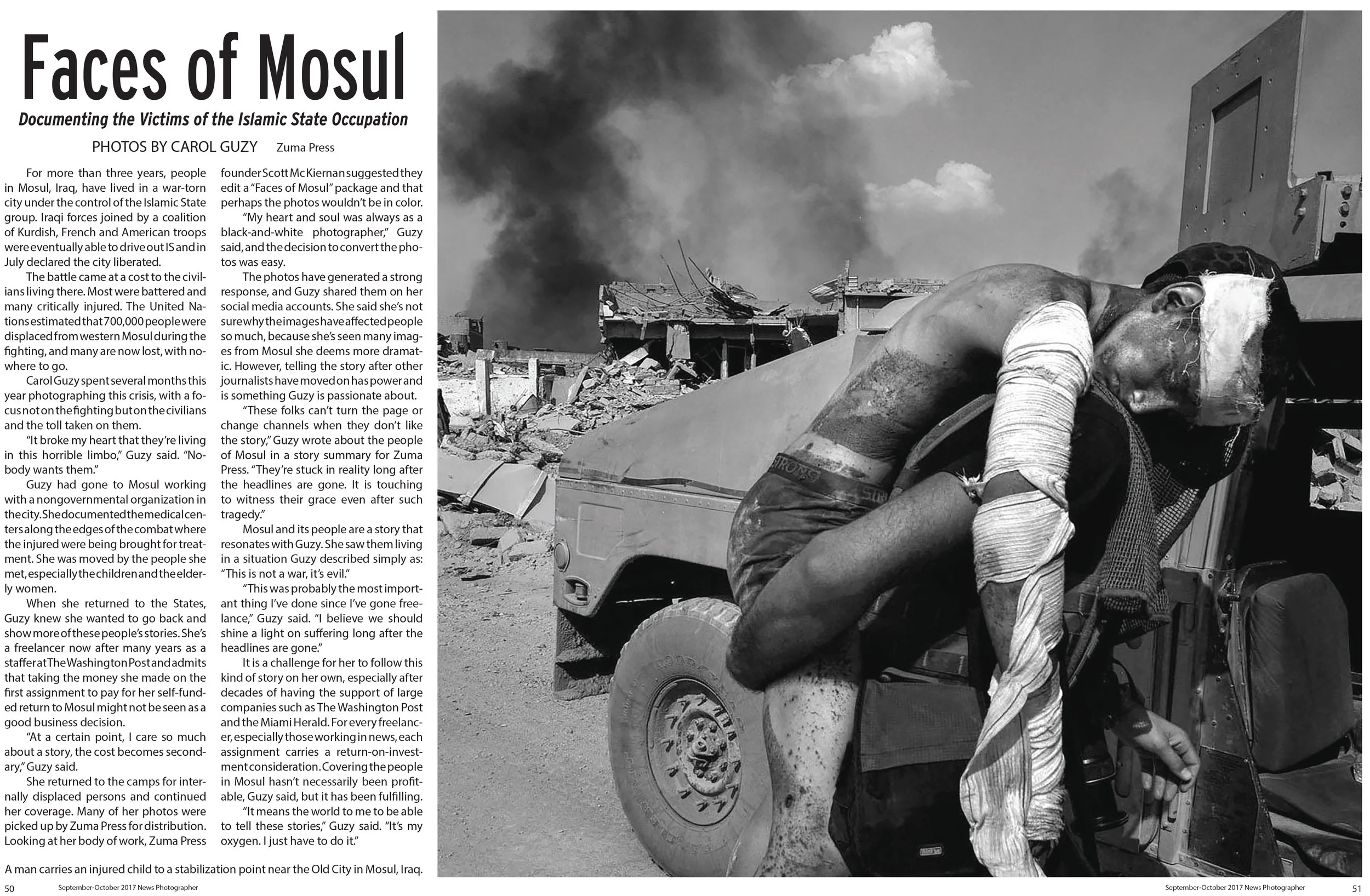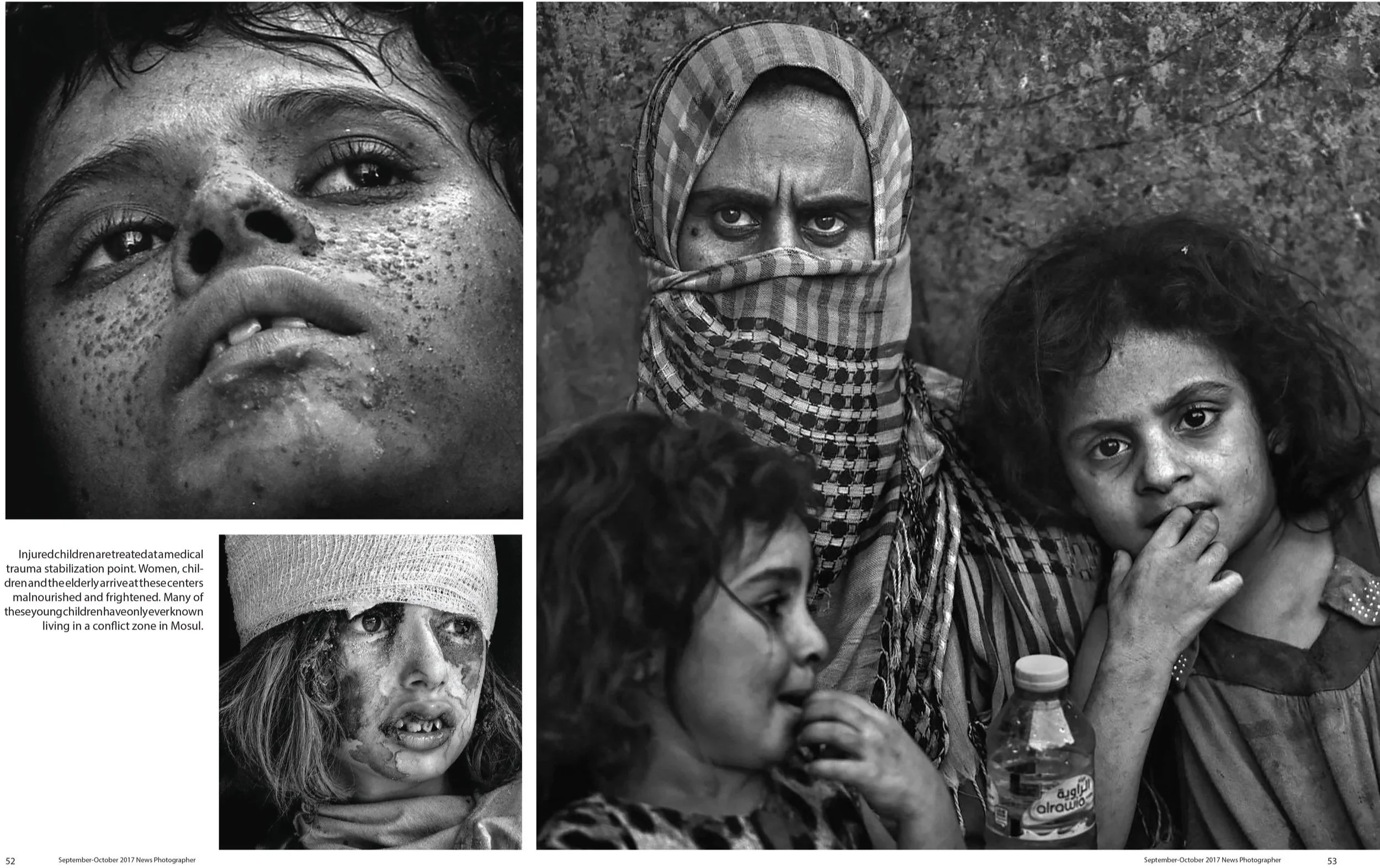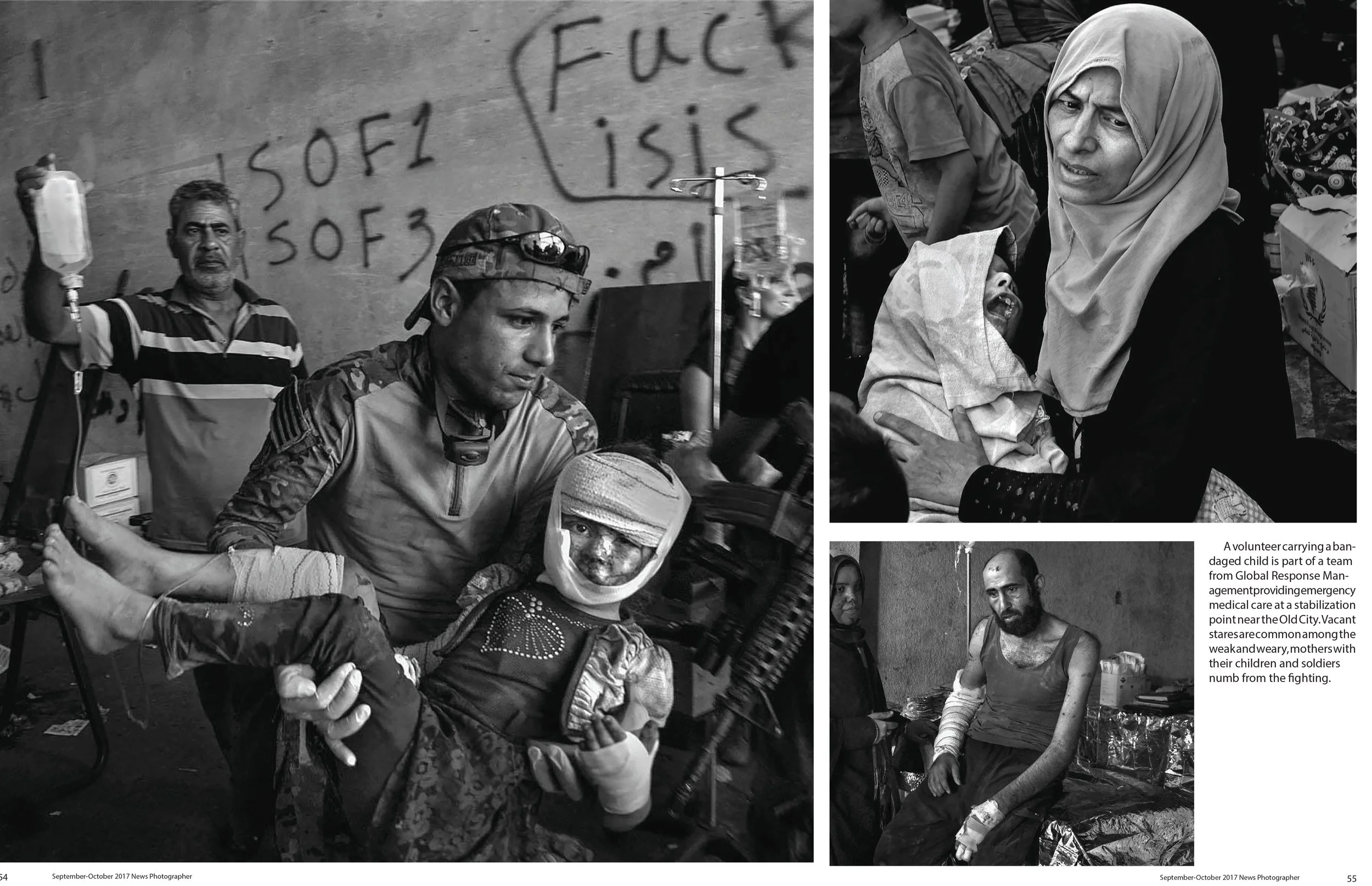Faces of Mosul
Documenting the Victims of the Islamic State Occupation
the photos of Carol Guzy
By Tom Burton
For more than three years, people in Mosul, Iraq, have lived in a war-torn city under the control of the Islamic State group. Iraqi forces, joined by a coalition of Kurdish, French and American troops, were eventually able to drive out IS and in July declared the city liberated.
The battle came at a cost to the civilians living there. Most were battered and many critically injured. The United Nations estimated that 700,000 people were displaced from western Mosul during the fighting, and many are now lost, with nowhere to go.
Carol Guzy spent several months this year photographing this crisis, with a focus not on the fighting but on the civilians and the toll taken on them.
“It broke my heart that they’re living in this horrible limbo,” Guzy said. “Nobody wants them.”
Guzy had gone to Mosul working with a nongovernmental organization in the city. She documented the medical centers along the edges of the combat where the injured were being brought for treatment. She was moved by the people she met, especially the children and the elderly women.
When she returned to the States, Guzy knew she wanted to go back and show more of these people’s stories. She’s a freelancer now after many years as a staffer at The Washington Post and admits that taking the money she made on the first assignment to pay for her self-funded return to Mosul might not be seen as a good business decision.
“At a certain point, I care so much about a story, the cost becomes secondary,” Guzy said.
She returned to the camps for internally displaced persons and continued her coverage. Many of her photos were picked up by Zuma Press for distribution. Looking at her body of work, Zuma Press founder Scott McKiernan suggested they edit a “Faces of Mosul” package and that perhaps the photos wouldn’t be in color.
“My heart and soul was always as a black-and-white photographer,” Guzy said, and the decision to convert the photos was easy.
The photos have generated a strong response, and Guzy shared them on her social media accounts. She said she’s not sure why the images have affected people so much, because she’s seen many images from Mosul she deems more dramatic. However, telling the story after other journalists have moved on has power and is something Guzy is passionate about.
“These folks can’t turn the page or change channels when they don’t like the story,” Guzy wrote about the people of Mosul in a story summary for Zuma Press. “They’re stuck in reality long after the headlines are gone. It is touching to witness their grace even after such tragedy.”
Mosul and its people are a story that resonates with Guzy. She saw them living in a situation Guzy described simply as: “This is not a war, it’s evil.”
“This was probably the most important thing I’ve done since I’ve gone freelance,” Guzy said. “I believe we should shine a light on suffering long after the headlines are gone.”
It is a challenge for her to follow this kind of story on her own, especially after decades of having the support of large companies such as The Washington Post and the Miami Herald. For every freelancer, especially those working in news, each assignment carries a return-on-investment consideration. Covering the people in Mosul hasn’t necessarily been profitable, Guzy said, but it has been fulfilling.
“It means the world to me to be able to tell these stories,” Guzy said. “It’s my oxygen. I just have to do it.”
Originally published in the September/October 2017 issue of News Photographer Magazine.


